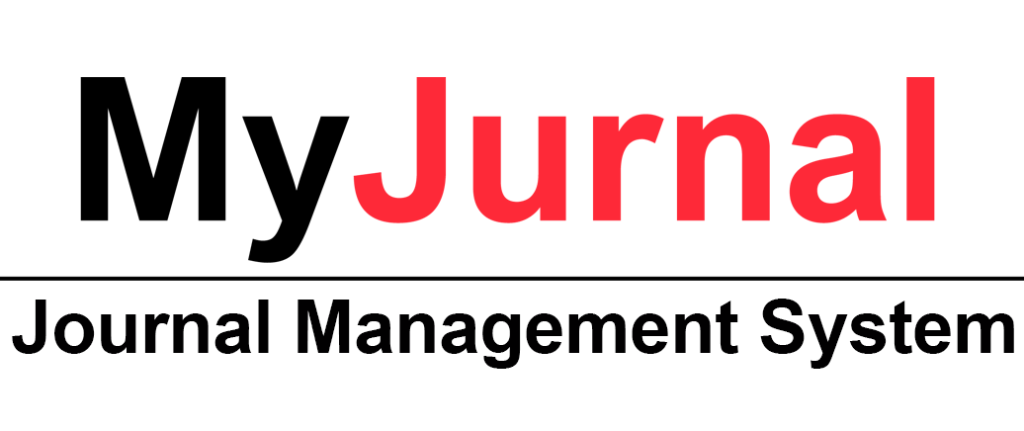The Practices of Human Resource Management Among Headmasters in Primary Schools: A Case Study of Selected National and Private Schools in Malaysia
DOI:
https://doi.org/10.31436/ijes.v5i1.149الملخص
This study focuses on the practices of human resource management among headmasters in primary schools across Malaysia. It concentrates on how headmasters perceive the concept of human resource management and translate it into practice. The qualitative research design is applied on six headmasters, four males and two females who serve in selected national and private primary schools. The qualitative data from the interviews are organized into themes and sub-themes. The major findings of this study reveal that a majority of the headmasters perceive human resource management as a shared responsibility among teachers and school administrators while the headmaster is the key manager. It also reveals that headmasters in national schools believe that human resource management is important to reach the educational goal. In contrast, a majority of headmasters in private schools believe that it is important for sustainability. In addition, this study also reveals that the headmasters of national schools have less autonomy in decision-making process as compared to headmasters of private schools. The results have implications on two major aspects; the leadership in human resource management and the system. The leadership implication will help headmasters identify the best practices of human resource management including support and professional development for the teachers. System refers to teacher placement and other policy implementation. Finally, this study recommends more authority to be given to headmasters in managing human resource in schools, especially in the national schools.المقاييس
يتم تحميل المقاييس...
المراجع
Ahmad Zabidi Abdul Razak, (2005). Pembangunan Organisasi Pendidikan yang Cemerlang Berasaskan Ciri-Ciri Kepimpinan Islam [Development of excellent educational organization based on Islamic leadership characteristics]. Masalah Pendidikan, 28, 105-116.
Aina S., (1982). Personnel Management in Nigeria: A work-centred approach. Ikeja: Edition F. Communications.
Anyamkpa E.C. (2000). A comparative study of the management of public and private secondary schools in Amuwo-Odofin Local Area of Lagos State. Unpublished B.Ed. Project. University of Ilorin, Ilorin.
Armstrong, M., (2009). Armstrong’s Handbook of Human Resource Management Practice. 11th Edn., Kogan Page, USA.
Armstrong, M. (2010). Armstrong’s Essential Human Resource Management Practice: A Guide to People Management. Kogan Page, USA.
AY Abdulkareem (2002). Human resource management practices in public and private primary schools in Ilorin metropolis of Kwara State, Nigeria Nigerian Journal of Guidance and Counselling http://www.ajol.info/index.php/njgc/article/view/36964.
Ayob Jantan. (2005). Pengetua sekolah yang efektif. Siri Penguruan Sekolah. Bentong: PTS Professional Publishing Sdn. Bhd.
Azlin Norhaini Mansor. (2006). Amalan pengurusan Pengetua. Universiti Kebangsaan Malaysia.
Bazeley, P. (2007). Qualitative data analysis with NVivo. London: Sage.
Berliner, D. C. (2005). The near impossibility of testing for teacher quality. Journal of Teacher Education, 56(3), 205-213.
Biklen, S. K., & Bogdon, R. C. (2007). Qualitative research for education: an introduction to theories and methods. United States of America: Pearson Education, Inc.
Blandford, Sonia. (2009). Mengurus sumber sekolah. Terj. Zahara Mohd Salleh. Kuala Lumpur: PTS Publication & Distributors.
Braton J. & Gold J. (1999). Human Resource Management Theory and Practice. London: Macmillan.
Bryman, A. (2008). Social research methods. New York: Oxford University Press Inc.
Chamberlin, R; Wragg, T; Haynes, G and Wragg, C (2002). ‘Performance-related pay and the teaching profession: a review of the literature’, Research Papers in Education, 17(1), 31-49.
Chanhorm, C., Chotisukan, S., and Gosalantagoon, O. (2011). Need to participate in Personnel administration of the Teacher in School under the Jurisdiction of Prachi Buri Educational Service Area. Journal of Graduate Studies Valaya Alongkorn Rajapat University, 1(Jan-April), 1-2.
Clincy, V. A. (2003). Software Development Productivity and Cycle Reduction, CCSC Eastern Conference - Consortium for Computing Sciences in Colleges, Dezembro, 2003.
Corral, C.R. (2009). An investigation of the relationship between performance appraisal and career development and advancement of mid-level women in student affairs administration. Unpublished doctoral dissertation, University Layola of Chicago.
Creswell, J. W. (2003). Research design: Qualitative, quantitative, and mixed methods approaches. Thousand Oaks, CA: Sage Publications.
Creswell, J.W. (2005). Educational research. New Jersey: Pearson Merrill, Prentice Hall.
Creswell, J. W. (2012). Planning, conducting, and evaluating quantitative and qualitative research (4th edn.). Thousand Oaks, CA: Sage Publications.
Cuming, M.W. (1980). The theory and practice of personnel management (4th ed.) London: Heinemann.
Darling-Hammond, L. (2003). Keeping good teachers: Why it matters what leaders can do. Educational Leadership, 60(1), 6-13.
Dyer, L. (1985). Strategic human resource and planning, In K,M, Rowland & G.R. Ferris (Eds). Research in personnel and human resources management (American Business Review, 2(1), 1-30. Greenwich, CT: JAI Press.
Educational Planning and Research Division. (2008). Education in Malaysia: A journey to excellent. Kuala Lumpur: Ampang Press.
Gambini, F. (2011). Leadership capacity for succession and sustainability in a family-owned private school (Order No. 3465438). Available from ProQuest Education Journals. (883387092). Retrieved from http://search.proquest.com.ezaccess.library.uitm.edu.my/docview/883387092?accountid=42518.
Gary, D. (2010). “Personnel Management”, Prentice Hall International Editions, New Jersey
Guskey, T. R., & Sparks, D. (1996). Exploring the relationship between staff development and improvements in student learning. Journal of Staff Development, 17(4), 34–38.
Herzberg F. (1966).Work and the nature of man. New York: World.
Hewton, E. (1998). School focused staff development; guidelines for staff development. Lewer: Falmer.
Hoerr, T (1998). ‘A case for merit pay’, Phi Delta Kappan, 80(4), 326-27.
Holt, M (2001) ‘Performance Pay for Teachers: The Standards Movement’s Last Stand?’ Phil Delta Kappan, 83(4), 321-317.
Jamaliah Abdul Hamid & Norhashimah Ismail. (2005). Penguruan dan Kepimpinan Pendidikan – Teori, Polisi dan Perlaksanaan. Serdang: Penerbit Universiti Putra Malaysia.
Jamilah Ahmad & Yusof Boon (2011). Amalan Kepimpinan Sekolah Berprestasi Tinggi (SBT) Di Malaysia. Journal of Edupres, 1(2011), 323-335.
Johnson, B., & Christensen, L. (2004). Educational research: Quantitative, qualitative, and mixed approaches (2nd edn.). USA: Pearson Education, Inc.
King, N. (2004). Using templates in the thematic analysis of text. Essential guide to qualitative methods in organizational research. London: Sage Publisher.
Kinzy, D., & Minter, D. (2008). The Dynamics of teacher Development: Negotiating where We Stand. Pedagogy, V, 8. N, 3. Retrieved July 5, 2011 from http://muse.jhu.edu/journals/ped /summary /v008/8.3.kinzy.html.
Kvale, Steinar (1998). Interviews—An Introduction to Qualitative Research Interviewing. Thousand Oaks: Sage.
Legge, K. (1989). “Human Resource Management – a critical analysis” in J. Storey (ed.) /New Perspectives on Human Resource Management. London: Routledge, 19-40.
Litchman, M. (2006). Qualitative research in education: a user’s guide. California: Sage Publication Inc.
Merriam, S.B. (1998). Qualitative research and case study: application in education. San Francisco: Jossey-Bass.
Ministry of Education Malaysia. (2015). Educational policy. Retrieved from http://www.moe.gov.my.
Mohd Bakri Musa, (2003). An Education System Worthy of Malaysia. Kuala Lumpur: Strategic Information Research Development (SIRD).
Nazrol Hassan, (2000). Analysis of Effectiveness: An Analysis in Sekolah Menengah Sains Sultan Ahmad Shah, Pekan, Pahang Darul Makmur, Thesis (B.Ed.), Scudai, Johore, Universiti Teknologi Malaysia.
Nik Suryani, (2008). A practical guide to interviewing in educational research. Kuala Lumpur: International Islamic University Malaysia.
Odden, A & Kelley, C (2002). Paying Teachers For What They Know And Do: New And Smarter Compensation Strategies To Improve Schools, 2nd Edition, Corwin Press, California.
Omar Abdull Kareem, (2001). Pengetua: dinamika pengurusan sumber manusia di sekolah. Jurnal Pengurusan dan Kepimpinan Pendidikan, 11(2), 38-52.
Omardin Ashaari, (1996). Pengurusan Sekolah: suatu panduan lengkap. Kuala Lumpur: Utusan Publications & Distributors Sdn. Bhd.
Patton, M.Q. (2002). Qualitative Research and Evaluation Methods. Thousand Oaks, CA: Sage Publications.
Petersen, K. D. (2002). Effective teacher hiring: A guide to getting the best. Alexandria, VA: Association of Supervision and Curriculum Development.
Ramirez, A (2001). ‘How merit pay undermines education’, Educational Leadership, 58(5), 16-20.
Rockoff, Jonah. (2004). "The Impact of Individual Teachers on Student Achievement: Evidence from Panel Data." American Economic Review 94:247-252.
Rothman, R. (2005). Landing the "highly qualified teacher" How administrators can hire and keep the best. In C. Chauncey (Ed.), Recruiting, Retaining, and Supporting Highly Qualified Teachers (pp. 31-42). Cambridge: Harvard Education Press.
Rusmini Ku Ahmad. (2004). Keberkesanan sekolah. Seminar Nasional Pengurusan dan Kepimpinan Pendidikan Ke -2. 6 – 9 November.
Sabar, N. (2004). From heaven to reality through crisis: Novice teachers as migrants. Teaching and Teacher Education, 20, 145-161.
Salkind, N. J. (2009). Exploring research (9th edn.). Upper Saddle River: Prentice Hall.
Sanders, W. L., & Rivers, J. C. (1996). Cumulative and residual effects of teachers on future student academic achievement. Research Progress Report. Knoxville: University of Tennessee Value-Added Research and Assessment Center.
Scherff, L., & Hahs-Vaughn, D. L. (2008). What we know about English language arts teachers: An analysis of the 1999-2000 SASS and 2000-2001 TFS databases. English Education, 40, 174-200.
School Management Division. (2011). Teacher placement management, PK01. Kuala Lumpur: Ministry of Education Malaysia.
Sekaran, U. & Bougie, R. (2010). Research Methods for Business: A Skill Building Approach (5th ed.). West. Sussex, UK: John Wiley & Sons Ltd.
Seyfarth, J. T. (2005). Human resources management for effective schools. Boston, MA: Pearson.
Shafritz, J. M., Ott, J. S., and Jang, Y. S. (2010). Human resource theory or the organizational behaviour perspective. In D. Tatom, D. Bush, & R. Green (Eds.), Classics of organization theory (p%.\45-\92). Boston, MA: Wadsworth-Cengage.
Shoeb Ahmad (2011). New Dimensions in Human Resource Management. New Delhi. Discovery Publishing House Pvt. Ltd.
Siow Heng Loke, et al. (1999). Government and private secondary schools: a comparison of academic achievement and educational equity, (Laporan projek PIER) Fakulti Pendidikan, Univeristi Malaya, Kuala Lumpur.
Slavin, R.E. (2007). Educational research in age of accountability. United States of America: Pearson Education, Inc.
Stake, R.E. (2010). Qualitative Research: Studying How Things Work. New York, NY: Guilford Press.
Strauss, A.L, & Corbin, J., (1990; 1998). Basics of Qualitative Research: Techniques and Procedures for developing Grounded Theory, Sage Publications Ltd, London.
Thompson, J., & Kleiner, B. H. (2005). Effective Human Resource Management of School Districts. Management Research News, 28 (2/3), 43. Retrieved from http://www.emerlaldinsight.com/journals.htm?articleid=1502891.
Tim Simkins, Mike Coldwell, Paul Close and Anne Morgan. (2009). Outcomes of In school Leadership Development Work. Journal of Educational Management Administration & Leadership 37(1), 29–50.
Tomlinson, H (2000). ‘Proposals for Performance Related Pay in English Schools’, School Leadership and Management, 20(3), 281-298.
Tucker-Lively, F. (2014). The relationship between human resource management practices and turnover intentions of mid-level administrators (Order No. 3581281). Available from ProQuest Dissertations & Theses Global. (1551604554). Retrieved from http://search.proquest.com.ezaccess.library.uitm.edu.my/docview/1551604554?accountid=42518
Werner, J.M. & R.L. Desimone (2012). Human Resource Development. 6th Edn., South-Western Cengage Learnin.
Wichenje, K. M., Simatwa, E. M. W., Okuom, H. A., and Kegode, E. A. (2012). Human resource management : challenges for head teachers in Public Secondary Schools in Kenya, a case study of Kakamega East District, 3(2), 159–171.
Williamson, A. L. (2008). The influence of sector on human resource management: A study of public, charter, and private schools (Order No. 3338665). Available from ProQuest Dissertations & Theses Global. (304391656). Retrieved from http://search.proquest.com.ezaccess.library.uitm.edu.my/docview/304391656?accountid=42518.
Woodward, R. (2009). The Organisation for Economic Co-operation and Development (OECD). Milton Park, Abingdon, Oxon: Routledge.
Zaidatol Akmaliah Lope Pihie dan Foo Say Fooi. (2007). Pengurusan dan Kepimpinan Pendidikan. Penerbit Universiti Putera Malaysia Serdang.
Aina S., (1982). Personnel Management in Nigeria: A work-centred approach. Ikeja: Edition F. Communications.
Anyamkpa E.C. (2000). A comparative study of the management of public and private secondary schools in Amuwo-Odofin Local Area of Lagos State. Unpublished B.Ed. Project. University of Ilorin, Ilorin.
Armstrong, M., (2009). Armstrong’s Handbook of Human Resource Management Practice. 11th Edn., Kogan Page, USA.
Armstrong, M. (2010). Armstrong’s Essential Human Resource Management Practice: A Guide to People Management. Kogan Page, USA.
AY Abdulkareem (2002). Human resource management practices in public and private primary schools in Ilorin metropolis of Kwara State, Nigeria Nigerian Journal of Guidance and Counselling http://www.ajol.info/index.php/njgc/article/view/36964.
Ayob Jantan. (2005). Pengetua sekolah yang efektif. Siri Penguruan Sekolah. Bentong: PTS Professional Publishing Sdn. Bhd.
Azlin Norhaini Mansor. (2006). Amalan pengurusan Pengetua. Universiti Kebangsaan Malaysia.
Bazeley, P. (2007). Qualitative data analysis with NVivo. London: Sage.
Berliner, D. C. (2005). The near impossibility of testing for teacher quality. Journal of Teacher Education, 56(3), 205-213.
Biklen, S. K., & Bogdon, R. C. (2007). Qualitative research for education: an introduction to theories and methods. United States of America: Pearson Education, Inc.
Blandford, Sonia. (2009). Mengurus sumber sekolah. Terj. Zahara Mohd Salleh. Kuala Lumpur: PTS Publication & Distributors.
Braton J. & Gold J. (1999). Human Resource Management Theory and Practice. London: Macmillan.
Bryman, A. (2008). Social research methods. New York: Oxford University Press Inc.
Chamberlin, R; Wragg, T; Haynes, G and Wragg, C (2002). ‘Performance-related pay and the teaching profession: a review of the literature’, Research Papers in Education, 17(1), 31-49.
Chanhorm, C., Chotisukan, S., and Gosalantagoon, O. (2011). Need to participate in Personnel administration of the Teacher in School under the Jurisdiction of Prachi Buri Educational Service Area. Journal of Graduate Studies Valaya Alongkorn Rajapat University, 1(Jan-April), 1-2.
Clincy, V. A. (2003). Software Development Productivity and Cycle Reduction, CCSC Eastern Conference - Consortium for Computing Sciences in Colleges, Dezembro, 2003.
Corral, C.R. (2009). An investigation of the relationship between performance appraisal and career development and advancement of mid-level women in student affairs administration. Unpublished doctoral dissertation, University Layola of Chicago.
Creswell, J. W. (2003). Research design: Qualitative, quantitative, and mixed methods approaches. Thousand Oaks, CA: Sage Publications.
Creswell, J.W. (2005). Educational research. New Jersey: Pearson Merrill, Prentice Hall.
Creswell, J. W. (2012). Planning, conducting, and evaluating quantitative and qualitative research (4th edn.). Thousand Oaks, CA: Sage Publications.
Cuming, M.W. (1980). The theory and practice of personnel management (4th ed.) London: Heinemann.
Darling-Hammond, L. (2003). Keeping good teachers: Why it matters what leaders can do. Educational Leadership, 60(1), 6-13.
Dyer, L. (1985). Strategic human resource and planning, In K,M, Rowland & G.R. Ferris (Eds). Research in personnel and human resources management (American Business Review, 2(1), 1-30. Greenwich, CT: JAI Press.
Educational Planning and Research Division. (2008). Education in Malaysia: A journey to excellent. Kuala Lumpur: Ampang Press.
Gambini, F. (2011). Leadership capacity for succession and sustainability in a family-owned private school (Order No. 3465438). Available from ProQuest Education Journals. (883387092). Retrieved from http://search.proquest.com.ezaccess.library.uitm.edu.my/docview/883387092?accountid=42518.
Gary, D. (2010). “Personnel Management”, Prentice Hall International Editions, New Jersey
Guskey, T. R., & Sparks, D. (1996). Exploring the relationship between staff development and improvements in student learning. Journal of Staff Development, 17(4), 34–38.
Herzberg F. (1966).Work and the nature of man. New York: World.
Hewton, E. (1998). School focused staff development; guidelines for staff development. Lewer: Falmer.
Hoerr, T (1998). ‘A case for merit pay’, Phi Delta Kappan, 80(4), 326-27.
Holt, M (2001) ‘Performance Pay for Teachers: The Standards Movement’s Last Stand?’ Phil Delta Kappan, 83(4), 321-317.
Jamaliah Abdul Hamid & Norhashimah Ismail. (2005). Penguruan dan Kepimpinan Pendidikan – Teori, Polisi dan Perlaksanaan. Serdang: Penerbit Universiti Putra Malaysia.
Jamilah Ahmad & Yusof Boon (2011). Amalan Kepimpinan Sekolah Berprestasi Tinggi (SBT) Di Malaysia. Journal of Edupres, 1(2011), 323-335.
Johnson, B., & Christensen, L. (2004). Educational research: Quantitative, qualitative, and mixed approaches (2nd edn.). USA: Pearson Education, Inc.
King, N. (2004). Using templates in the thematic analysis of text. Essential guide to qualitative methods in organizational research. London: Sage Publisher.
Kinzy, D., & Minter, D. (2008). The Dynamics of teacher Development: Negotiating where We Stand. Pedagogy, V, 8. N, 3. Retrieved July 5, 2011 from http://muse.jhu.edu/journals/ped /summary /v008/8.3.kinzy.html.
Kvale, Steinar (1998). Interviews—An Introduction to Qualitative Research Interviewing. Thousand Oaks: Sage.
Legge, K. (1989). “Human Resource Management – a critical analysis” in J. Storey (ed.) /New Perspectives on Human Resource Management. London: Routledge, 19-40.
Litchman, M. (2006). Qualitative research in education: a user’s guide. California: Sage Publication Inc.
Merriam, S.B. (1998). Qualitative research and case study: application in education. San Francisco: Jossey-Bass.
Ministry of Education Malaysia. (2015). Educational policy. Retrieved from http://www.moe.gov.my.
Mohd Bakri Musa, (2003). An Education System Worthy of Malaysia. Kuala Lumpur: Strategic Information Research Development (SIRD).
Nazrol Hassan, (2000). Analysis of Effectiveness: An Analysis in Sekolah Menengah Sains Sultan Ahmad Shah, Pekan, Pahang Darul Makmur, Thesis (B.Ed.), Scudai, Johore, Universiti Teknologi Malaysia.
Nik Suryani, (2008). A practical guide to interviewing in educational research. Kuala Lumpur: International Islamic University Malaysia.
Odden, A & Kelley, C (2002). Paying Teachers For What They Know And Do: New And Smarter Compensation Strategies To Improve Schools, 2nd Edition, Corwin Press, California.
Omar Abdull Kareem, (2001). Pengetua: dinamika pengurusan sumber manusia di sekolah. Jurnal Pengurusan dan Kepimpinan Pendidikan, 11(2), 38-52.
Omardin Ashaari, (1996). Pengurusan Sekolah: suatu panduan lengkap. Kuala Lumpur: Utusan Publications & Distributors Sdn. Bhd.
Patton, M.Q. (2002). Qualitative Research and Evaluation Methods. Thousand Oaks, CA: Sage Publications.
Petersen, K. D. (2002). Effective teacher hiring: A guide to getting the best. Alexandria, VA: Association of Supervision and Curriculum Development.
Ramirez, A (2001). ‘How merit pay undermines education’, Educational Leadership, 58(5), 16-20.
Rockoff, Jonah. (2004). "The Impact of Individual Teachers on Student Achievement: Evidence from Panel Data." American Economic Review 94:247-252.
Rothman, R. (2005). Landing the "highly qualified teacher" How administrators can hire and keep the best. In C. Chauncey (Ed.), Recruiting, Retaining, and Supporting Highly Qualified Teachers (pp. 31-42). Cambridge: Harvard Education Press.
Rusmini Ku Ahmad. (2004). Keberkesanan sekolah. Seminar Nasional Pengurusan dan Kepimpinan Pendidikan Ke -2. 6 – 9 November.
Sabar, N. (2004). From heaven to reality through crisis: Novice teachers as migrants. Teaching and Teacher Education, 20, 145-161.
Salkind, N. J. (2009). Exploring research (9th edn.). Upper Saddle River: Prentice Hall.
Sanders, W. L., & Rivers, J. C. (1996). Cumulative and residual effects of teachers on future student academic achievement. Research Progress Report. Knoxville: University of Tennessee Value-Added Research and Assessment Center.
Scherff, L., & Hahs-Vaughn, D. L. (2008). What we know about English language arts teachers: An analysis of the 1999-2000 SASS and 2000-2001 TFS databases. English Education, 40, 174-200.
School Management Division. (2011). Teacher placement management, PK01. Kuala Lumpur: Ministry of Education Malaysia.
Sekaran, U. & Bougie, R. (2010). Research Methods for Business: A Skill Building Approach (5th ed.). West. Sussex, UK: John Wiley & Sons Ltd.
Seyfarth, J. T. (2005). Human resources management for effective schools. Boston, MA: Pearson.
Shafritz, J. M., Ott, J. S., and Jang, Y. S. (2010). Human resource theory or the organizational behaviour perspective. In D. Tatom, D. Bush, & R. Green (Eds.), Classics of organization theory (p%.\45-\92). Boston, MA: Wadsworth-Cengage.
Shoeb Ahmad (2011). New Dimensions in Human Resource Management. New Delhi. Discovery Publishing House Pvt. Ltd.
Siow Heng Loke, et al. (1999). Government and private secondary schools: a comparison of academic achievement and educational equity, (Laporan projek PIER) Fakulti Pendidikan, Univeristi Malaya, Kuala Lumpur.
Slavin, R.E. (2007). Educational research in age of accountability. United States of America: Pearson Education, Inc.
Stake, R.E. (2010). Qualitative Research: Studying How Things Work. New York, NY: Guilford Press.
Strauss, A.L, & Corbin, J., (1990; 1998). Basics of Qualitative Research: Techniques and Procedures for developing Grounded Theory, Sage Publications Ltd, London.
Thompson, J., & Kleiner, B. H. (2005). Effective Human Resource Management of School Districts. Management Research News, 28 (2/3), 43. Retrieved from http://www.emerlaldinsight.com/journals.htm?articleid=1502891.
Tim Simkins, Mike Coldwell, Paul Close and Anne Morgan. (2009). Outcomes of In school Leadership Development Work. Journal of Educational Management Administration & Leadership 37(1), 29–50.
Tomlinson, H (2000). ‘Proposals for Performance Related Pay in English Schools’, School Leadership and Management, 20(3), 281-298.
Tucker-Lively, F. (2014). The relationship between human resource management practices and turnover intentions of mid-level administrators (Order No. 3581281). Available from ProQuest Dissertations & Theses Global. (1551604554). Retrieved from http://search.proquest.com.ezaccess.library.uitm.edu.my/docview/1551604554?accountid=42518
Werner, J.M. & R.L. Desimone (2012). Human Resource Development. 6th Edn., South-Western Cengage Learnin.
Wichenje, K. M., Simatwa, E. M. W., Okuom, H. A., and Kegode, E. A. (2012). Human resource management : challenges for head teachers in Public Secondary Schools in Kenya, a case study of Kakamega East District, 3(2), 159–171.
Williamson, A. L. (2008). The influence of sector on human resource management: A study of public, charter, and private schools (Order No. 3338665). Available from ProQuest Dissertations & Theses Global. (304391656). Retrieved from http://search.proquest.com.ezaccess.library.uitm.edu.my/docview/304391656?accountid=42518.
Woodward, R. (2009). The Organisation for Economic Co-operation and Development (OECD). Milton Park, Abingdon, Oxon: Routledge.
Zaidatol Akmaliah Lope Pihie dan Foo Say Fooi. (2007). Pengurusan dan Kepimpinan Pendidikan. Penerbit Universiti Putera Malaysia Serdang.
التنزيلات
منشور
2018-06-07
كيفية الاقتباس
Mohamed Idrus, N. A., Othman, A., & Faizuddin, A. (2018). The Practices of Human Resource Management Among Headmasters in Primary Schools: A Case Study of Selected National and Private Schools in Malaysia. IIUM Journal of Educational Studies, 5(1), 26–48. https://doi.org/10.31436/ijes.v5i1.149
إصدار
القسم
Articles
الرخصة
The Journal will own copyright to all published works and have the right of first publication, both in print and online, unless other arrangements are made with the Editors in advance. It is the author`s responsibility to ensure that where copyright materials are included within an article the permission of the copyright holder has been obtained beforehand.






















